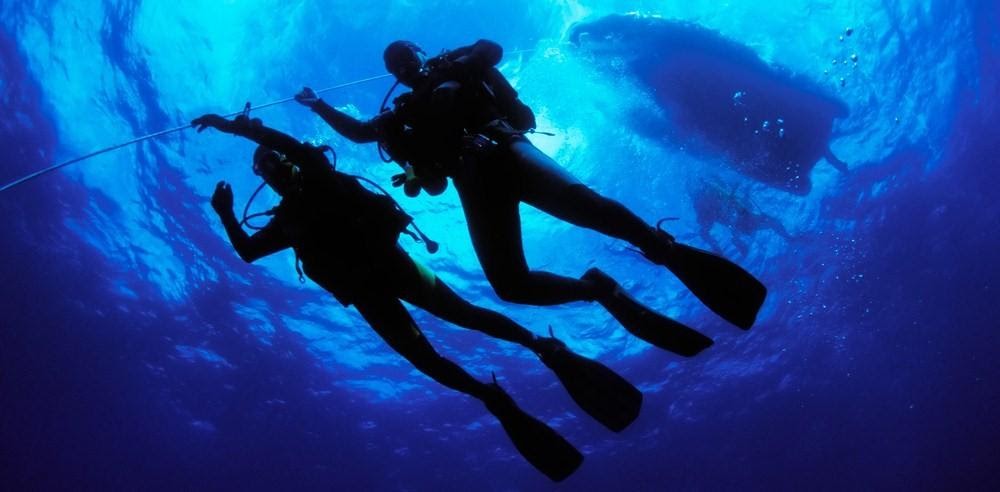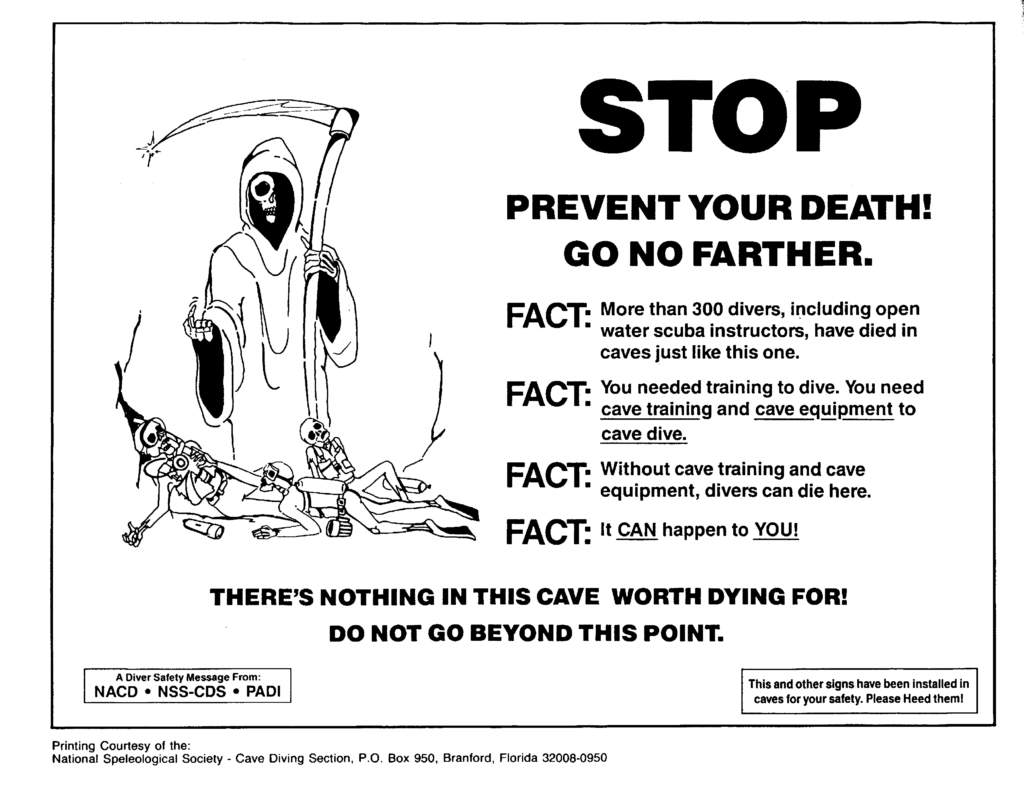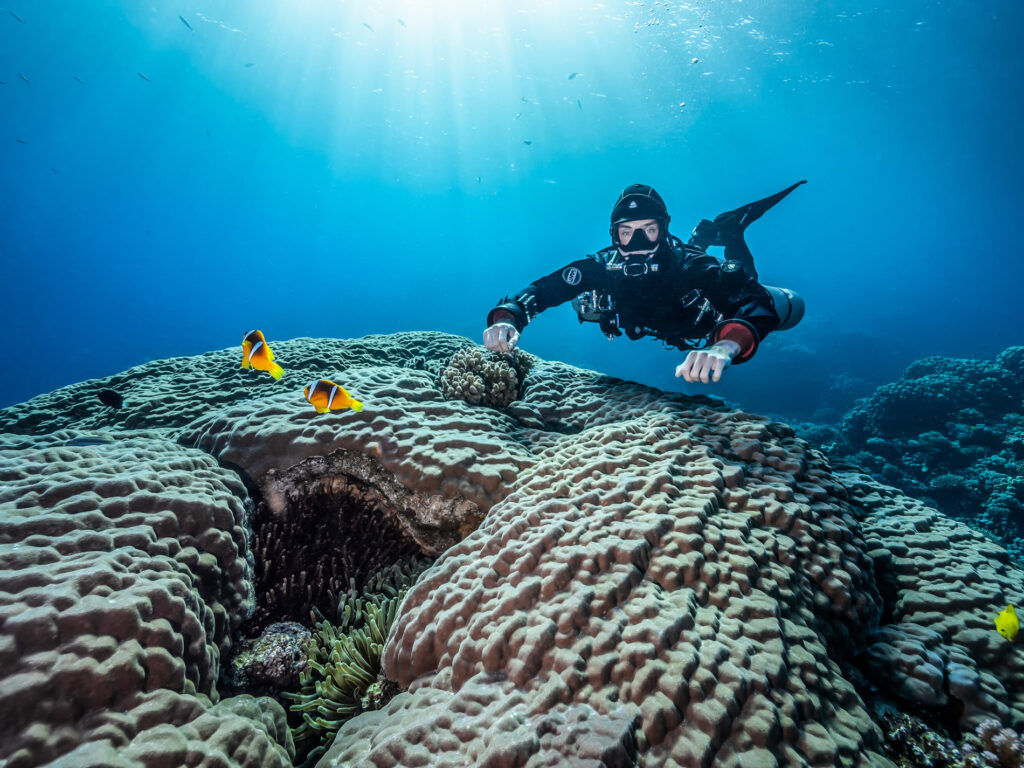The Wrong Way to Dive Deep: The Dangers of Single Tank Deep Diving
We’ve all heard the stories. Perhaps we’ve even told them.
Deep diving on single tank is a thing of the past. Yet it continues to happen in the present and continues to cause dive accidents.
Let’s clear this fatal issue up, once and for all, dispelling the myths and misconceptions.
Defining our Terms
‘Deep’ is a relative term – one person’s deep is another person’s shallow.
In recreational diving, new divers are restricted to around 18 metres. With further recreational training, divers can extend their limits to a maximum of 40 metres – while remaining within no decompression limits.
Dives in excess of 40 metres, or any dive requiring mandatory decompression stops, belong to the realm of technical diving.
For the purposes of this article, ‘deep’ is meant in this sense – dives deeper than 40 metres and/or requiring decompression stops.
Setting the Scene
Previously, when technical diving was still in its embryonic phase, single tank deep diving was commonplace.
Access to specialised equipment, gases and training was scarce, and so for those looking to go deep, single tank dives were one of very few other options.

Let’s not forget – this was a time when Nitrox was known as the “Voodoo gas”!
Deep diving past 40 metres and completing mandatory decompression stops with a single tank in this period was still dangerous – yet, given the lack of alternatives, it was also somewhat understandable.
However, the practice still continues today.
Talk with any instructor, divemaster, or simply any diver that’s been around long enough – the chances that they have their own ‘that one deep dive’ story are high.
Yet, in the world of today, with ease of access to technical diving courses, mixed breathing gases, specialised equipment, and accident reports, why would anyone continue this dangerous practice?
The Benefits
The benefits of deep diving on single tank diving are obvious and practical:
- Reduced costs
- An easier way to go deep diving
Technical diving courses, equipment and gases – like everything in diving – are not for free. Nor does every course guarantee certification – there’s a standard you need to first reach.
To become a tec diver, you need to invest time and money. You also need to be a good diver.
Single tank deep diving saves you on these investment costs and doesn’t make good skills a prerequisite.
Additionally, single tank deep diving is just easier.
There’s no new equipment configuration to get used to (and purchase); you can immediately go deep diving without having to first do a tec course; nobody is going to deny you a certification card. And overall, you don’t need to make any sort of commitment.
Sounds good.
But single tank deep diving isn’t all seahorses and rainbows. Let’s take a look at the risks.
The Risks
The end-risk of deep single tank deep diving is death and/or severe injury. The factors that get you there are:
- Carbon dioxide build up
- Oxygen toxicity
- Decompression sickness
- Running out of gas
- Inert gas narcosis
These risks can of course be managed with the right training and equipment – but that’s the key part which single tank deep diving ignores!

Almost every deep-dive-that-went-wrong story goes something like this:
The Deep Dive that Went Wrong
You and your buddy decide one day that you want to go a little bit deeper than usual. For example, you want to check out the reef at 45 metres.
Neither of you are technical divers and you’re both using a standard single tank recreational equipment configuration. But you still go about making a dive plan:
‘Maximum depth 45 metres and ascend when the first one of us reaches 120 bar!’
So, you jump in the water and descend to your planned depth. The dive is going great and you’re both excited to extend your limits.
But then something happens.
For example – you forget to check your pressure gauge regularly. And the next time you do check it, you’ve only got 50 bar in your tank!
You’re shocked and suddenly get a bit stressed. You begin to breathe quicker, consuming your air even quicker. You signal to your buddy, and you both start to ascend.
But now both of you have decompression stops to complete during the ascent, as you’ve exceeded your No Decompression Limit. For example, you have to stay at 9 metres for 3 minutes, at 6 metres for 5 minutes, and at 3 metres for 8 minutes. That’s an extra 16 minutes to add into your ascent time!
By the time you reach 9 metres, your tank is empty. You share air from your buddy’s tank – but they’re also low on air now.
Finally, at 6 metres, with decompression stops still remaining, you both run out of air and have to make an emergency ascent to the surface.
Not so cool, right?
Lessons Learnt

This story is one variation among many.
In every case, the first mistake is going beyond your certification level. The training is missing and so is the correct equipment.
The next problem you run into is forgetting to check something – perhaps your pressure gauge, your total decompression time, or your current depth. This is the result of gas narcosis, as well as a lack of training for this type of dive.
When you realise your mistake, you become stressed. Stress increases your rate of breathing which causes your air to be consumed even more quickly. It also increases the amount of carbon dioxide you produce, leading to more severe narcosis.
From here, either you run out of gas during the ascent, leading to omitted decompression stops, an emergency ascent and increased risk of decompression sickness. Or, the influence of narcosis causes you to dive even deeper, putting you at risk of oxygen toxicity and death.
Concluding Thoughts
The often-heard rule of ‘Don’t dive beyond your certification level’ is often heard for a good reason.
Risks are frequently subtle, and small problems cause a chain of minor events that lead to big problems. Without adequate training and the correct equipment, the likelihood of death or severe injury is massively increased.
But it doesn’t all need to be like this.

If you’re wanting to extend your limits safely within a relaxed training environment, then Lagona Divers Technical can help you get there. Drop us a message to arrange your first technical diving course, or for any other enquiries!


